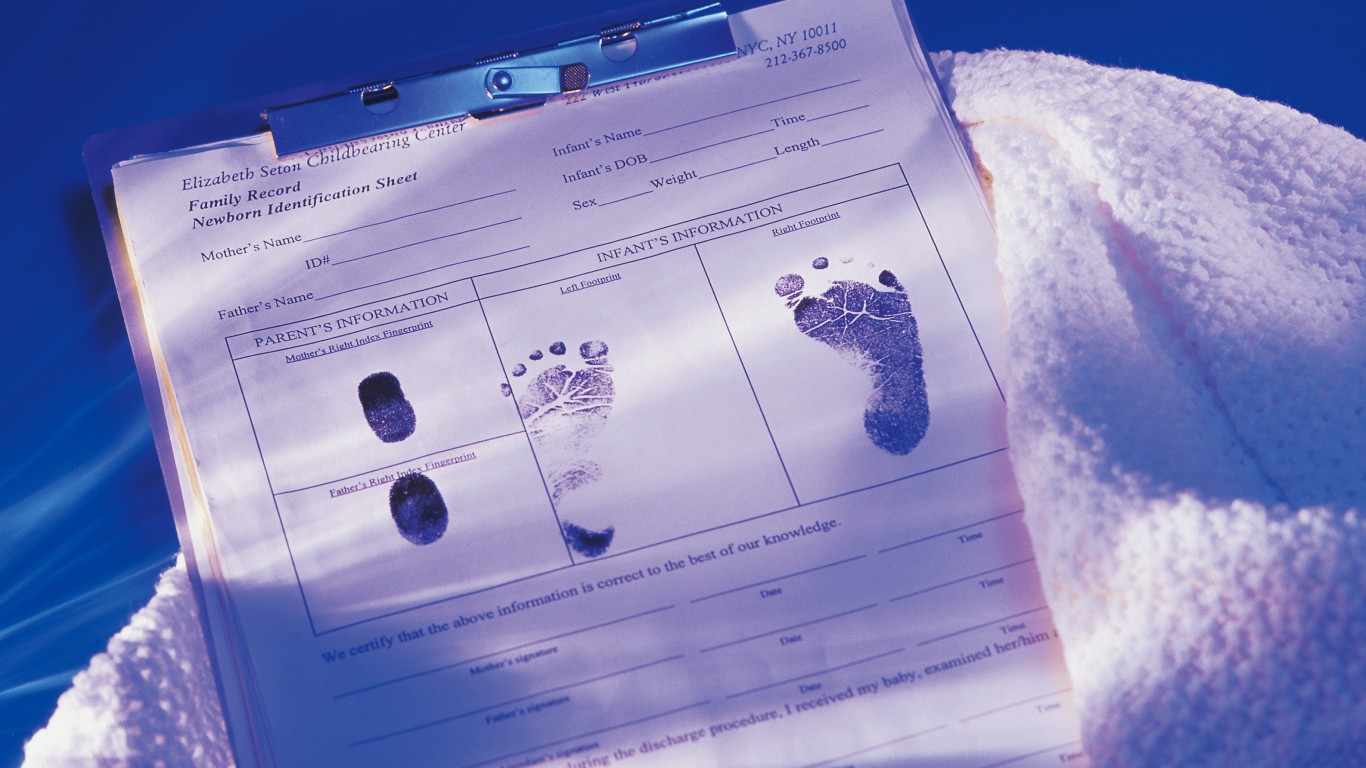Special Report
Why We Need Leap Day and Other Surprising Facts About Feb. 29

Published:
Last Updated:

Most people know that a leap year is every four years and that it has something to do with the Earth circling the sun. But many may not be aware of the purpose of this extra day — and may know even less about how it came to be.
The whole story is complex and it goes back to ancient Roman times. Since then February 29 has prompted some unusual customs, wild rumors, and strange superstitions — from bad luck for full-time employees to good luck for women who want to get married, and special talents for those born on leap day, often referred to as leaplings.
The chances of being born on leap day, February 29, are remote. Less than 0.1% of the world’s population is a leapling. Many leaplings have made significant contributions in fields ranging from music to sports — here are 25 famous people born on leap day.
Click here for 20 surprising facts about leap day.

1. A year is actually more than 365 days
It’s all about the sun! We grew up being told the Earth takes 365 days to make a complete circle around the Sun, but it actually takes 365 days, 5 hours, 48 minutes and 45 seconds — or 365.24219 days. An extra day is added about every four years as a corrective measure to stay in sync with the solar year.
[in-text-ad]

2. There used to be a whole leap month
Ancient Romans had an extra month every few years because the Roman calendar year was 355 days — 10 days and a few hours shorter than the solar year. To fix that issue and to keep the calendar in sync with the change of seasons, the Romans added an extra month every few years. After a while, this method was too chaotic. That’s why Julius Caesar and astronomers decided to add just one day on a more consistent basis — every four years. This is why Caesar is known as “the father of the leap year.”
3. There was a February 30 at some point
Whether by accident or intentionally, February had 30 days at least on two occasions. Sweden wanted to switch from the Julian calendar to the Gregorian calendar in 1700. But 1700, which was supposed to be a leap year in the Julian calendar, ended up being a regular year in the country. The error led to more mistakes and a lot of confusion. Sweden had to go back to the Julian calendar and added two leap days in 1712 to get back in line. The country eventually converted to the Gregorian calendar in 1753.
February 30 was an actual date in the Soviet Union in 1930 and 1931. Officials wanted to even out the year and have five-day weeks and 30-day months. This, too, created a lot of confusion and the seven-day week was restored in 1940.

4. Leap years are not always every four years
Determining a leap year seems pretty straight forward — every four years. But every rule has exceptions. A leap year has to be exactly divided by 4, but cannot be divided by 100 — and this is why 2100 or 2200 will not be leap years. But this exception also has an exception: If the year is divisible by 100, and also divisible by 400, then it is a leap year — just like the year 2000 was.
[in-text-ad-2]

5. There have been just over 100 leap days in history
The Julian calendar, according to which a year was 365 days and six hours — 11 more minutes than the actual length — was suspended in 1582 by Pope Gregory XIII. Since 1582 there have been 108 or 109 leap days — not that many for a tradition that has been around for five centuries.
However, if you include the leap days established with the Julian calendar around 45 BC, then there have been a total of 515 to 517 leap days.

6. The chances of being a leapling are tiny
The chances of being born on any day are 1 in 365. Multiply that by four, and the odds of being a leapling are 1 in 1,461. So, statistically speaking, if birthdays are evenly distributed throughout the year, 0.07% of the world’s population was born on leap day.
[in-text-ad]

7. There is a club for people born on February 29
Leaplings have their own club, and membership is free. The Honor Society of Leap Year Day Babies, which dates back to 1988, also offers a birth family search service. The club will publish information about someone who may be born on February 29 to help with finding them.

8. There is a tradition that women propose marriage on leap day
Perhaps the most popular tradition associated with leap day is related to marriage. While the norm is for men to propose, the roles are reversed on February 29, according to the custom that is rumored to have started in 5th century Ireland. The story goes that St. Brigit of Kildare complained to St. Patrick that women had to wait for men to pop the question. As a result, he declared that women can make an offer of marriage once every four years on leap day.

9. Men had to accept or pay a fine
According to tradition, a woman’s proposal on leap day was an offer a man could not refuse. If he did, it would cost him 12 pairs of gloves. The woman needed the gloves to hide her shame at not having an engagement ring on her finger. Another type of “fine” for saying “no” was a silk dress as consolation.
[in-text-ad-2]

10. Many avoid getting married on leap year
It’s bad luck to get married in leap year, at least in Greece and Ukraine. The superstition used to apply to any kind of new start — whether a relationship or a job. There seems to be only anecdotal evidence that Greeks avoid getting married in a leap year because, according to the superstition, the marriage will end either in divorce or with one of the spouses’ death.

11. Disasters strike during a leap year
Superstitious people may quickly point out a few disasters that took place in a leap year, albeit not on leap days. One of the better known is the sinking of the Titanic on April 10, 1912. The Spanish Civil War started in 1936, a leap year; Martin Luther King Jr. and Robert Kennedy were both assassinated in 1968, a leap year; Mahatma Gandhi was killed in 1948, another leap year.
[in-text-ad]

12. February 29 can’t be used on some official documents
Some businesses and organizations have left the date of February 29 out when digitizing their registration processes. Many leaplings still have problems when asked to enter their birth date. Applying for a driver’s license can be frustrating, as some states don’t let you put February 29 as the date of birth. Some states have statutes specifying whether February 28 or March 1 is to be used; if they don’t, the default date is March 1.

13. First arrest warrants for witchcraft were issued on leap day
The first arrest warrant for witchcraft was issued on February 29, 1692. It was against Sarah Good, Sarah Osborne, and Tituba. Good was the first to testify in the Salem Witchcraft trials. Some say she may have been chosen to start the trials off because residents of Salem Village hated her and wanted her gone.

14. Leap year is considered a doomed year in Italy
In Italy, leap year is described as anno finesto, which means fatal or doomed year. Farming, fertility, and family are most at risk, according to one belief. According to another, women are erratic during leap years. This may be the reason for another superstition in Italy — you don’t get married in a leap year.
[in-text-ad-2]

15. Leap year may bring strange weather in Russia
Leap year has a different meaning in many parts of the world. People in Russia go further than avoiding marriage because of bad luck. They believe the risk of strange weather and death in general is much higher in leap years.

16. Married daughters come home in Taiwan
If a woman in Taiwan was married, traditionally she would come home for the month of February during leap years. She would take care of her parents, as it was believed the leap month would bring bad health to parents. The daughters brought pig trotter noodles for good health and fortune.
[in-text-ad]

17. Some think leaplings have special talents
Talented people are born every day of the year, but those born on a leap day have special gifts and unique personalities, according to astrologers from the past. Examples include Pope Paul III, composer Gioachino Rossini, John Philip Holland, who invented the modern submarine, and actor Dennis Farina.

18. There are three generations of leaplings in one family
There has been only one confirmed case of a single family having kids in three consecutive generations born on leap day. Peter Anthony Keogh was born in 1940 in Ireland; his son Peter Eric was born in 1964; and his grand daughter Bethany Wealth was born in 1996.

19. You may be working for free on leap day
Full-time employees with a fixed annual salary who work on February 29 may actually be working for free. An annual salary is technically set for a typical year, which doesn’t include the extra day every four years. This is not an issue when people are paid by the hour.
[in-text-ad-2]

20. There is a Leap Capital of the world
Leap year has a hometown and it’s Anthony, Texas, on the border with New Mexico. Every leap year it hosts the Worldwide Leap Year Festival and people from all over travel to participate in parades, hot air balloon rides, and other activities.
Want retirement to come a few years earlier than you’d planned? Or are you ready to retire now, but want an extra set of eyes on your finances?
Now you can speak with up to 3 financial experts in your area for FREE. By simply clicking here you can begin to match with financial professionals who can help you build your plan to retire early. And the best part? The first conversation with them is free.
Click here to match with up to 3 financial pros who would be excited to help you make financial decisions.
Have questions about retirement or personal finance? Email us at [email protected]!
By emailing your questions to 24/7 Wall St., you agree to have them published anonymously on a673b.bigscoots-temp.com.
By submitting your story, you understand and agree that we may use your story, or versions of it, in all media and platforms, including via third parties.
Thank you for reading! Have some feedback for us?
Contact the 24/7 Wall St. editorial team.